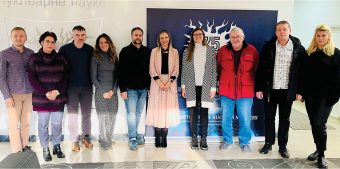
Imagine a piece of paper floating on wastewater containing harmless and natural particles. The sun activates these particles, and beneath the film, a miracle occurs. Bacteria are eliminated, pesticides, dyes, and other pollutants in the water are degraded, and as a result, hydrogen is produced, which can be used as fuel. This innovative idea is at the core of research within the HYDIS project, funded by the Science Fund of the Republic of Serbia.
The project brings together scientists from the Vinča Institute of Nuclear Sciences, the Institute of Chemistry, Technology, and Metallurgy, the Innovation Center of the Faculty of Technology and Metallurgy, and the Faculty of Technology and Metallurgy. The pollution issue in Serbia is highly relevant, and the HYDIS project is designed to contribute to solving this problem. The goal is to improve the quality of life by reducing pollution and utilizing alternative energy sources, such as hydrogen. At the same time, the problem of infections and the resistance of many bacterial strains to common antimicrobial agents necessitates new solutions. Using innovative materials activated by sunlight represents a significant step toward a healthier life for citizens and a more environmentally friendly approach to combating pollution.
IN FOCUS:
- Reverse Vending Machines – A Smart Solution for a Clean Future
- Circular Economy – A Goal or a Means of Waste Management?
- Responsible Waste Management: Key to Sustainable Solar Energy
The HYDIS project focuses on developing nanomaterials based on metal oxides and natural organic compounds. Materials such as titanium dioxide and zinc oxide, known for their role in protecting the skin from UV radiation in sunscreens, are activated by sunlight in this research to be used for wastewater purification, even during winter months. Within the project, these metal oxides are combined with natural compounds isolated from plants, creating a material that, under the influence of sunlight, destroys pathogenic microorganisms, breaks down organic pollutants, and produces hydrogen— the fuel of the future.
Project team HYDIS
The story was published in the Energy portal Magazine CIRCULAR ECONOMY



